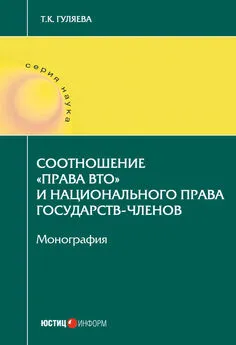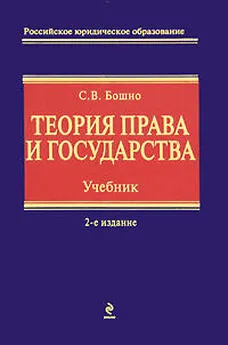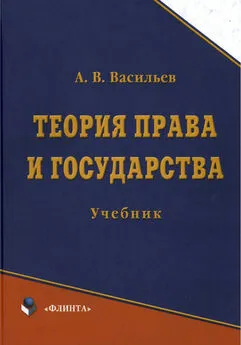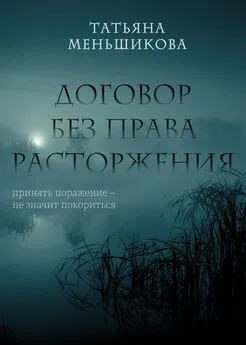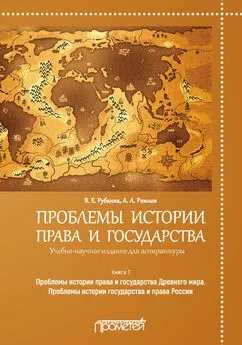Татьяна Гуляева - Соотношение «права ВТО» и национального права государств-членов
- Название:Соотношение «права ВТО» и национального права государств-членов
- Автор:
- Жанр:
- Издательство:Литагент Юстицинформ
- Год:2017
- Город:Москва
- ISBN:978-5-7205-1380-1
- Рейтинг:
- Избранное:Добавить в избранное
-
Отзывы:
-
Ваша оценка:
Татьяна Гуляева - Соотношение «права ВТО» и национального права государств-членов краткое содержание
Отдельные положения монографии могут быть использованы профильными министерствами и ведомствами, действующими в области международных экономических и торговых отношений.
Настоящее издание может получить применение в ходе преподавания дисциплин: «международное право», «международное экономическое право», «право международных организаций» и «право ВТО» в рамках подготовки бакалавров и магистров по специальности «Юриспруденция».
Соотношение «права ВТО» и национального права государств-членов - читать онлайн бесплатно ознакомительный отрывок
Интервал:
Закладка:
18. Desmedt A. L’Accra des particuliers aux droits et obligations de l’OMC dans la CE // Revue de Droit Commercial (Editions Kluwer). 2003. – P. 357–372.
19. Dunoff J.L. Constitutional Conceits: The WTO’s ‘Constitution’ and the Discipline of International Law // EJIL. – 2006. – Vol. 17, N 3. – P. 647–675.
20. Duvigneau J. Die Konstitutionalisierung des WTO-Rechts: Zur juristischen Diskussion bber Verfassungsstrukturen im Bereich des Handelsvplkerrechts // Aussenwirtschaft. – 2001. – Vol. 56, N. 3. – P. 295–325.
21. Eeckhout P. The Domestic Legal Status of the WTO Agreements: Interconnecting Legal Systems // Common Market Law Review. – 1997. – Vol. 34. Issue 1. – P. 11–58.
22. Ehlermann C.D. On the Direct Effect of the WTO Agreements / Einhorn T. (ed.). Spontaneous Order, Organization and the Law: Roads to a European Civil society. – The Hague: TMC Asser Press, 2003. – P. 413–419.
23. Fitzmaurice G. The General Principles of International Law Considered from the Standpoint of the Rule of Law // Recueil des Cours. – 1957. – Vol. 92. – P. 1—227.
24. Fitzmaurice G. The Law and Procedure of the International Court of Justice: General Principles and Sources of International Law // British Yearbook of International Law. – 1953. – Vol. 30. – P. 1—70.
25. Hafner-Burton E.M. Trade and Development Agreements for Human Rights? // GREAT Insights. – Vol. 1. Issue 2. – Maastricht: ECDPM, 2012. – P. 1–4.
26. Heiskanen V. The Relation of International and Municipal Law // The Finnish Yearbook of International Law. – 1990. – Vol. I. – P. 154–256.
27. Hilf M. Power, Rules and Principles – Which Orientation for WTO/GATT law? // Journal of International Economic Law. – 2001. – Vol. 4. – P. 111–130.
28. Hilf M., Goettsche G.J. The Relation of Economic and Non– Economic Principles in International Law in Griller, S. (ed), International Economic Governance and Non-Economic Concerns: New Challenges for the International Legal Order. Springer: Vienna, 2003. – P. 5—46.
29. Howse R. The Appellate Body Rulings in the Shrimp / Turtle Case: A New Legal Baseline for the Trade and Environmental Debate // Columbia Journal Environmental Law. – 2002. – Vol. 27. – P. 489–519.
30. Iwasawa Y. Kokusai Ho Hanrei no Ugoki [Trends of the Case Law on International Law] // Jurist. – 2006. – N 1313.
31. Jackson J.H. The WTO ‘Constitution’ and Proposed Reform: Seven ‘Mantras’ Revisited // Journal of International Economic Law. – 2001. – Vol. 4. – P. 67–78.
32. Jackson J.H. Status of Treaties in Domestic Legal Systems: A Policy Analysis // American Journal of International Law. – 1992. – Vol. 86. – P. 310–340.
33. Kuijper P.J. The Law of the GATT as a Special Field of International Law: Ignorance, Further Refinement or Self-Contained System of International Law? // NETHERLANDS Yearbook of International Law. – 1994. – Vol. 25. – P. 227–257.
34. Lafer C. The World Trade Organization Dispute Settlement System // Gilberto Amado Memorial Lectures. Brasilia: FUNAG, 2012. – P. 583–616.
35. Leebron D. Implementation of the Uruguay Round Results in the United States / Jackson J., Sykes A. (eds.). Implementing the Uruguay Round. – Oxford: Oxford University Press, 1997. – P. 175–242.
36. Lennard M. Navigating by the Stars: Interpreting the WTO Agreements // Journal of International Economic Law. – 2002. – Vol. 5. – P. 17–89.
37. Lia J., Shen Q. The Domestic Application of WTO Laws. – 2009. – Vol. 2, N 3. – P. 44–47.
38. Marceau G. Conflicts of Norms and Conflicts of Jurisdiction: The Relationship Between the WTO Agreement and MEAs and Other Treaties // Journal of World Trade. – 2001. – P. 1081–1131.
39. Marceau G.Z., Trachtman J.P. GATT, TBT and SPS: A Map of WTO Law of Domestic Regulation of Goods. In The WTO Dispute Settlement System 1995–2003 / Ortino F., Petersmann E.-.U. (ed.). – The Hague: Kluwer Law International, 2004. – P. 275–340.
40. Mavroidis P.C., Cottier T., Davey W.J., Fox E.M., Komuro N., Horlick G.N., Rosenthal D.E. Is the WTO Dispute Settlement Mechanism Responsive to the Needs of the Traders – Would a System of Direct Action by Private Parties Yield Better Results // Journal of World Trade. – 1998. – Vol. 32, N 2. – P. 147–165.
41. Mlsna P. International Treaties in European Law: Dualism Versus Monism // Czech Yearbook of International Law. Second Decade Ahead: Tracing the Global Crisis. – 2010. – P. 145–159.
42. Moseneke D. The role of comparative and public international law in domestic legal systems: a South African perspective // Advocate (South Africa). – 2010. – P. 63–66.
43. Naiki Y. The Mandatory discretionary doctrine in WTO Law: the US – section 301 case and its aftermath // Journal of International Economic Law. – 2004. – Vol.7, N 1. – P. 23–72.
44. Nakagawa-A. T., Shimizu-K., Taira-S., Kokusai Keizai Ho [International Economic Law] // Yuhikaku, 2003.
45. Nguyen N. WTO Accession at Any Cost? Examining the Use of WTO-Plus and WTO-Minus Obligations for Least-Developed Country Applicants // Temple International and Comparative Law Journal. – 2008. – Vol. 22, N 1. – P. 1—277.
46. Oliphant B. Interpreting the Charter with international law: pitfalls and principles // Appeal. – 2014. – Vol. 19. – P. 105–129.
47. Palmeter D., Mavroidis P.C. The WTO Legal System: Sources of Law // AJIL. – 1998. – Vol. 92. – P. 398–413.
48. Palmeter D. The WTO as a Legal System // Fordham International Law Journal. – 2000. – Vol. 24. – P. 444–480.
49. Paust J.J. Self-Executing Treaties // American Journal of International Law. – 1928. —Vol. 82. – P. 760–783.
50. Pauwelyn J.A Typology of Multilateral Treaty Obligations: Are WTO Obligations Bilateral or Collective in Nature? // EJIL. – 2003. – Vol. 14. – P. 907–951.
51. Pauwelyn J. The Role of Public International Law in the WTO: How Far Can We Go? // AJIL. – 2001. – Vol. 95. – P. 535–578.
52. Pauwelyn J. Enforcement and Countermeasures in the WTO: Rules are Rules – Toward a More Collective Approach // American Journal of International Law. – 2000. – Vol. 94. – P. 335–347.
53. Petersmann E.-U. Dispute Settlement in International Economic Law – Lessons for Strengthening International Dispute Settlement in Non-Economic Areas // Journal of International Economic Law. – 1999. – Vol. 2. – P.189–248.
54. Petersmann E.-U. Constitutionalism and International Organizations // Northwestern Journal of International Law and Business. – 1996. – Vol. 17. – P. 398–469.
55. Petersmann E.-U. Theories of Justice, Human Rights and the Constitution of International Markets // Loyola of Los Angeles Law Review. – 2003. – Vol. 37. – P. 407–460.
56. Prechal S. Does Direct Effect Still Matter? // Common Market Law Review. – 2000. – Vol. 37. Issie 5. – P. 1047–1069.
57. Romero A.C. El efecto directo de los acuerdos OMC: la sentencia de 23 de noviembre de 1999 (Portugal c. Consejo, C-149/96) o la obstinacion del TJCE // Revista de Derecho Comunitarion Europeo. – 2000. – № 7.
58. Povarchuk R. Cambodia’s WTO Accession: A Strenuous but Necessary Step for a Poor Nation Seeking Economic Prosperity // Pacific Rim Law and Policy Journal. – 2004. – Vol. 13, N. 3. – P. 645–671.
59. Schabas W. A. Twenty-Five Years of Public International Law at the Supreme Court of Canada // The Canadian Bar Review. – 2000. – Vol. 79. – P. 174–195.
60. Seidl – Hohenveldern, I. Transformation or Adoption of International Law into Municipal Law // International & Comparative Law Quarterly. – 1963. – Vol. 12, N 1. – P. 88—124.
61. Sei Fujii v. California case // American Journal of International Law. – 1952. – Vol. 46, N.3. – P. 559–573.
62. Simma B., Pulkowski D. Legal Speciales and Self-Contained Regimes / J. Crawford, A. Pellet and S. Olleson (eds.). The Law of International Responsibility. – Oxford: Oxford University Press, 2010. – P. 139–163.
63. Smith W., Hallward-Driemeier M. Understanding the Investment Climate // Finance and Development, 2005. – P. 40–43.
64. Trachtman J.P. The Domain of WTO Dispute Resolution // Harvard International Law Journal. – 1999. – Vol. 40. – 333 p.
65. Van Ert G. Dubious Dualism: The Reception of International Law in Canada //Valparaiso University Law Review. – 2010. – Vol. 44, N 3. – P. 927–934.
66. Varquez C.M. The Four Doctrines of Self-Executing Treaties // American Journal of International Law. – 1995. – Vol. 695. – P. 695–723.
67. Varquez C.M. Response: Laughing at Treaties // Columbia Law Review. – 1999. – Vol. 99, N. 8. – P. 2154–2217.
68. Verhoeven J. La notion d’applicabilith directe du droit international // Revue belge de droit international. – 1980. – N 2. – P. 243–264.
69. Von Bogdandy A. Pluralism, direct effect, and the ultimate say: On the relationship between international and domestic constitutional law // International Journal of Constitutional Law. – 2008. – Vol. 6, N. 3–4. – P. 397–413.
70. Weiss W. Security and Predictability under WTO Law // World Trade Review. – 2003. – Vol. 2. – P. 183–219.
71. Zhang Х. Direct effect ofthe WTO Agreements: NationalSurvey// International Trade Law Review. – 2003. – Vol. 9.
Словари
1. Ожегов С.И., Шведова Н.Ю. Толковый словарь русского языка: 80 000 слов и фразеологических выражений/ Российская академия наук. Институт русского языка им. Виноградова. – 4-е изд., доп. – М.: Азбуковник, 1999. – 944 с.
2. Collins English Dictionary: Complete and Unabridged. – 10th ed. 2015 // Dictionary.com [Офиц. сайт]. URL: http:// dictionary.reference.com/browse/underlying.
Интернет ресурсы
1. http://www.wto.org/english/docs_e/legal_e/03-fa.pdf – официальный сайт Всемирной торговой организации.
2. http://www.eurasiancommission.org/ru/docs/Pages/default. aspx?ddb = %D0%A0%D0%B5%D1%88%D0%B5%D0 %BD%D0%B8%D1%8F+%D1%81%D1%83%D0%B4 %D0%B0 + %D0%95%D0%B2%D1%80%D0%90%D0 %B7%D0%AD%D0%A1%3B&db = %D0%A0%D0%B5 %D1%88%D0%B5%D0%BD%D0%B8%D1%8F+%D1 %81%D1%83%D0%B4%D0%B0 + %D0%95%D0%B2 % D1%80%D0%90%D0%B7%D0%AD%D0%A1%7C70c58 aa1-f69c-4a90-a577-7148c99e57d3&qt=Equal&pt=tree&se-arch=1&page=1&ismain=1&hd=1 – официальный сайт Евразийской экономической комиссии.
3. http://ec.europa.eu/agriculture/markets/wine/third/austr_ en.pdf – официальный журнал Европейского союза.
4. http://www.mercosur.int/ – официальный сайт Южноамериканского общего рынка.
5. http://www.naftanow.org/default_en.asp – официальный сайт Североамериканского соглашения о свободной торговле.
6. http://www.israelemb.org/washington/Obama_in_Israel/Pages/ US-Israel-Trade-Relations.aspx – официальный сайт посольства Израиля в США.
7. http://courteurasian.org/main.aspx?guid=22941 – официальный сайт Суда Евразийского экономического союза.
8. https://www.wto.org/english/tratop_e/dispu_e/dispu_by_ country_e.htm – таблица споров в Органе по разрешению споров ВТО.
Читать дальшеИнтервал:
Закладка:
